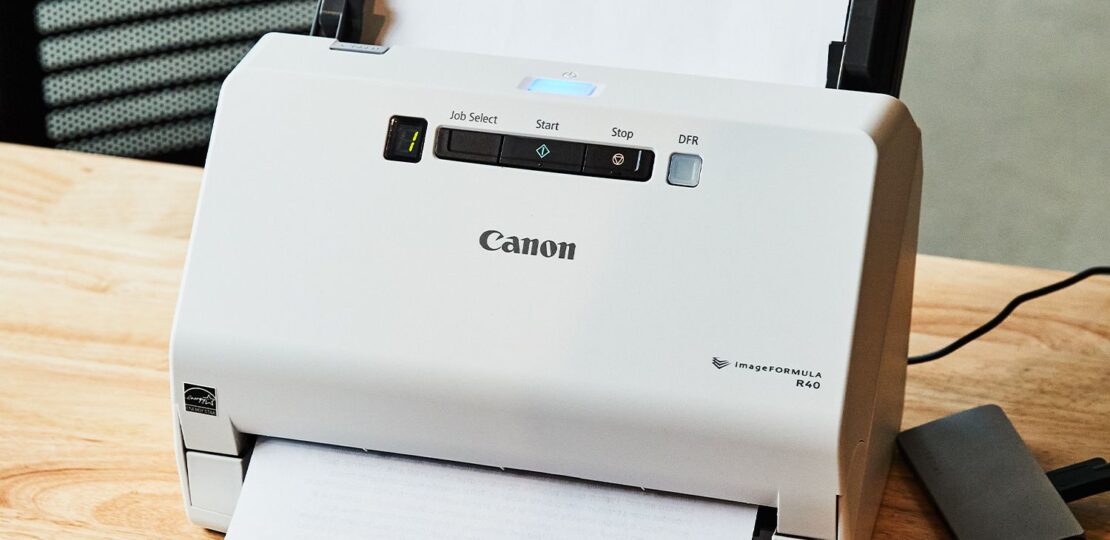The Power of Document Scanners: Digitizing the Modern Workspace
October 22, 2025 | by IoT Development Company

In an era where businesses and individuals rely on efficiency and data accuracy, document scanners have become indispensable tools. From small home offices to global enterprises, the ability to convert physical papers into digital formats is no longer a luxury—it’s a necessity. Document scanners streamline workflows, reduce clutter, and enhance data management in ways that traditional filing systems simply cannot.
What Is a Document Scanner?
A document scanner is a device that captures images or text from physical documents and converts them into digital files. These scanners come in various types—flatbed, sheet-fed, handheld, and even portable mobile scanners—each designed for specific needs. The resulting digital copies can be stored, shared, and edited easily, helping organizations move toward a paperless environment.
Unlike regular office printers or copiers with scanning features, dedicated document scanners are optimized for speed, clarity, and functionality. They can handle large volumes of paperwork while maintaining accuracy in text recognition through Optical Character Recognition (OCR) technology.
Why Document Scanners Are Essential in Today’s Work Environment
The demand for document scanners has grown rapidly across industries due to the global shift toward digitization. Whether you’re managing invoices, contracts, or client records, the benefits are undeniable:
1. Improved Organization and Accessibility
With document scanners, there’s no need to search through endless paper files. Digitized documents can be stored in cloud systems or local drives, easily categorized by date, name, or department. This enhanced organization saves valuable time, allowing teams to locate information with just a few clicks.
2. Enhanced Security and Backup
Physical files are vulnerable to damage, loss, and unauthorized access. Scanning and storing documents digitally adds a layer of protection—files can be encrypted, password-protected, and regularly backed up to secure servers. This ensures business continuity and compliance with data protection regulations.
3. Space and Cost Savings
Paper storage consumes physical space and often requires additional filing cabinets or offsite facilities. By scanning and digitizing documents, companies can reclaim office space, reduce paper usage, and lower printing and storage expenses—making operations leaner and more eco-friendly.
4. Faster Workflow and Collaboration
A digital document can be shared instantly with colleagues, clients, or departments across the globe. Instead of mailing or faxing papers, scanned files can be emailed or uploaded to shared drives. This significantly accelerates communication and decision-making, particularly for remote and hybrid teams.
5. Environmental Responsibility
Transitioning to digital documents supports sustainable practices. Reducing paper consumption means fewer trees cut down, lower waste, and decreased carbon footprint. For businesses focused on corporate responsibility, using document scanners is a step toward greener operations.
Key Features to Look for in a Document Scanner
When choosing a document scanner for your business or personal use, several features can make a major difference in performance and usability:
1. Scanning Speed
Measured in pages per minute (PPM), this indicates how quickly a scanner processes documents. For high-volume offices, look for models offering 30–60 PPM or higher.
2. Automatic Document Feeder (ADF)
An ADF allows users to load multiple pages for automatic scanning without manual feeding—ideal for scanning stacks of documents efficiently.
3. Duplex Scanning
Duplex scanners capture both sides of a document simultaneously, reducing the time spent flipping pages manually.
4. OCR Capability
Optical Character Recognition enables the conversion of scanned text into editable and searchable formats, such as Word or PDF files. This is particularly useful for archiving and document retrieval.
5. Connectivity Options
Modern scanners often include USB, Wi-Fi, and cloud connectivity, allowing direct uploads to email, Google Drive, Dropbox, or network folders.
6. Resolution and Image Quality
Measured in dots per inch (DPI), resolution determines the sharpness of scanned images. For text-based documents, 300 DPI is sufficient, while photographs or detailed diagrams may require 600 DPI or more.
7. Compatibility and Software Integration
Ensure your scanner integrates seamlessly with your existing systems—Windows, macOS, or specialized document management software. Some high-end models come with bundled software for image editing, OCR, and file organization.
Types of Document Scanners
Document scanners come in various forms to suit different use cases:
-
Flatbed Scanners – Ideal for delicate or bound materials like books and magazines. Users place documents on a glass surface for scanning.
-
Sheet-Fed Scanners – Designed for quick batch scanning of loose pages; perfect for office environments.
-
Portable Scanners – Compact and powered via USB, these are great for on-the-go professionals.
-
Handheld Scanners – Small, manual devices for scanning small sections or receipts.
-
Production Scanners – Heavy-duty machines capable of processing thousands of pages per day, typically used by corporations and government offices.
-
Photo and Film Scanners – Specialized for scanning images, negatives, and slides at high resolution.
How Document Scanners Support Digital Transformation
In today’s competitive landscape, companies are investing heavily in digital transformation—the integration of digital technology into every area of business. Document scanners play a crucial role in this transformation by bridging the gap between physical and digital workflows.
By digitizing historical records, invoices, and contracts, organizations can automate data entry, reduce human error, and streamline internal processes. Moreover, the use of OCR and AI-powered document management systems allows for data extraction, enabling companies to analyze information more efficiently.
Industries such as healthcare, legal services, banking, and education are especially reliant on document scanners for compliance, accuracy, and archiving. For example:
-
Healthcare providers use scanners to manage patient records and billing forms securely.
-
Law firms digitize contracts and case files for quick retrieval.
-
Educational institutions use scanners to archive administrative paperwork and exam sheets.
-
Financial organizations digitize KYC documents and loan applications for faster processing.
Why Choose Tecisoft for Your Office Scanning Solutions
When it comes to sourcing reliable document scanners and office equipment, Tecisoft stands out as a trusted provider offering a wide range of cutting-edge technology solutions. With years of experience catering to corporate, educational, and government clients, Tecisoft understands the importance of performance, reliability, and after-sales support.
From compact home-office scanners to enterprise-grade production models, Tecisoft’s catalog includes products from leading global brands—ensuring high-quality scanning performance for every application. Their team helps customers choose the right solution tailored to their needs, offering not just devices but a complete ecosystem of IT and office hardware solutions.
The Future of Scanning Technology
As technology advances, document scanners are evolving beyond simple image capture. Future models are expected to integrate AI-based recognition, cloud automation, and blockchain-backed security to ensure authenticity and traceability of documents. Additionally, with the rise of remote work, wireless and app-controlled scanners are becoming more prevalent, offering seamless operation from smartphones and tablets.
Ultimately, the goal remains the same: to make document management faster, smarter, and more secure.
Conclusion
The humble document scanner has become a cornerstone of modern office efficiency. It bridges the gap between physical and digital worlds, empowering businesses to operate with precision, sustainability, and speed. Whether you’re scanning a single page or digitizing entire archives, investing in a quality scanner is an investment in productivity and long-term growth.
As workplaces continue to modernize, brands like Tecisoft continue to provide the reliable technology and support businesses need to stay ahead in a paperless, digitally driven world.
RELATED POSTS
View all



